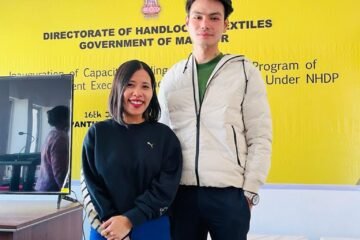The Heingang Handloom Cluster in Manipur, India, is a testament to the rich tradition of handloom weaving in the region. This cluster, comprising a group of talented weavers, has been at the forefront of the Cluster Development Programme (CDP), which aims to empower weavers and make them self-sustainable.
The CDP recognizes the importance of weavers’ groups as a visible entity and supports their development. By providing them with the necessary resources, training, and marketing assistance, the CDP enables these groups to thrive and contribute to the local economy.
One of the key objectives of the CDP is to enhance the skills of the weavers. Through various training programs, they are equipped with advanced techniques and knowledge to create intricate and high-quality handloom products. This not only improves the quality of their craftsmanship but also enables them to explore new design possibilities.
Moreover, the CDP focuses on creating a sustainable market for the weavers’ products. It helps them in identifying potential buyers, both within India and internationally, and facilitates their participation in exhibitions and trade fairs. This exposure not only increases their visibility but also opens up new avenues for business and collaborations.
Another significant aspect of the CDP is the provision of financial support to the weavers. This includes assistance in procuring raw materials, upgrading their equipment, and accessing credit facilities. By addressing these financial barriers, the CDP ensures that the weavers can focus on their craft without worrying about the financial constraints.
The Heingang Handloom Cluster has witnessed a remarkable transformation since its association with the CDP. The weavers, once struggling to make ends meet, now have a sustainable livelihood. They have gained recognition for their exceptional craftsmanship and have become an integral part of the local economy.
The success of the Heingang Handloom Cluster and other similar initiatives highlights the importance of supporting traditional crafts and artisans. These clusters not only preserve our cultural heritage but also contribute to sustainable development and empowerment of communities.


0 Comments